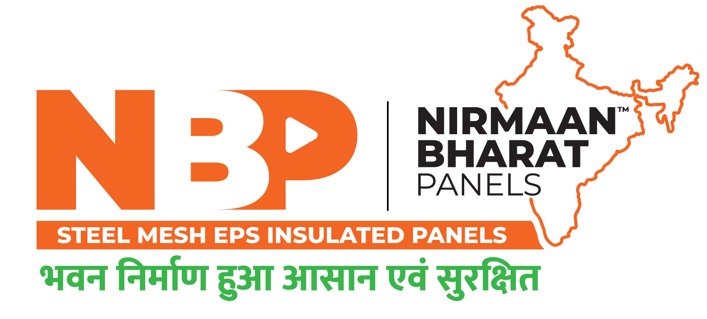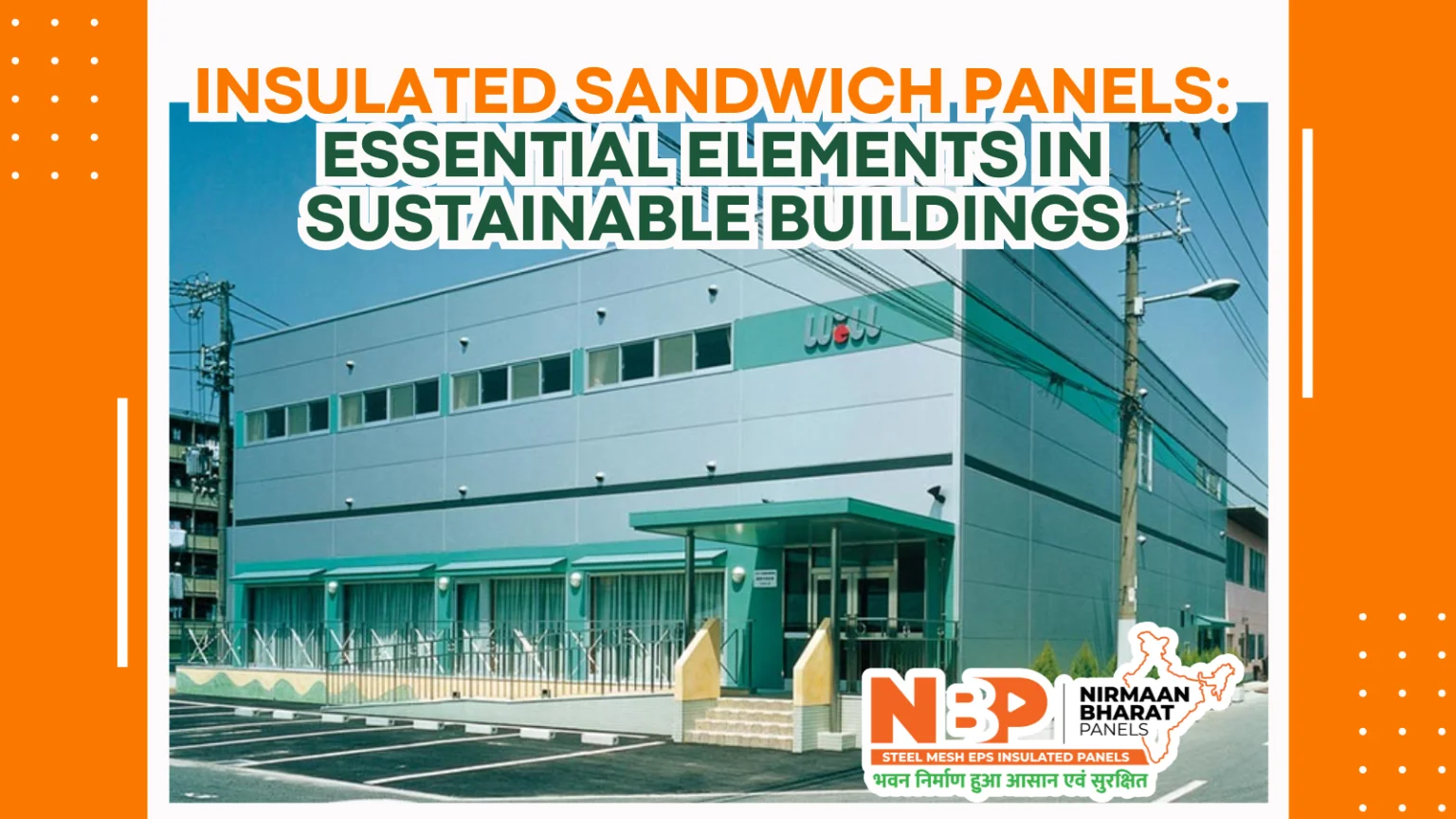As the construction industry increasingly embraces sustainable practices, insulated sandwich panels have emerged as a crucial element in the design and construction of green buildings. These panels are engineered to provide superior insulation and energy efficiency, addressing key environmental concerns while offering significant performance benefits. This article delves into the role of insulated sandwich panels in green buildings, exploring their benefits, applications, and contributions to sustainable construction.
Table of Contents
ToggleUnderstanding Insulated Sandwich Panels
Insulated sandwich panels are multi-layered building materials designed to combine structural strength with thermal insulation. Typically, these panels consist of two outer layers (skins) and an inner core of insulating material. The skins are often made from metals like steel or aluminium, while the core can be composed of various insulating materials, such as Expanded Polystyrene (EPS), Extruded Polystyrene (XPS), polyurethane, or mineral wool.
Insulated sandwich panels are commonly employed in construction due to their thermal efficiency, structural strength, and ease of installation. Here are the key technical specifications for these panels:
1. Core Materials
- Polyurethane (PUR) or Polyisocyanurate (PIR): High thermal insulation properties, generally with a thermal conductivity (λ-value) of around 0.022-0.025 W/mK.
- Expanded Polystyrene (EPS): Good insulation, with a thermal conductivity of about 0.035-0.040 W/mK.
- Mineral Wool (Rock Wool): Fire-resistant and provides thermal insulation, with a thermal conductivity around 0.035-0.045 W/mK.
- Phenolic Foam: Excellent insulation and fire performance, with a thermal conductivity of around 0.020-0.025 W/mK.
2. Panel Dimensions
- Thickness: Typically ranges from 40mm to 200mm, depending on insulation requirements.
- Width: Common widths are 1,000mm, 1,200mm, or 1,250mm.
- Length: Generally available in lengths up to 12,000mm or more, customizable based on project requirements.
3. External and Internal Facings
- Materials: Panels are often faced with metal sheets (such as steel or aluminum), but other materials like fiber-cement or plastic can also be used.
- Thickness: Typically ranges from 0.4mm to 1.0mm.
4. Thermal Performance
- Thermal Transmittance (U-value): Ranges from 0.2 to 0.5 W/m²K, depending on the panel’s core material and thickness.
- Thermal Resistance (R-value): Higher thickness and better insulation materials provide higher R-values, with typical values from 2.0 to 6.0 m²K/W.
5. Fire Performance
- Fire Resistance Rating: Panels can be rated from non-combustible to fire-resistant, often classified under standards like Euroclass (e.g., B-s1,d0) or national equivalents.
- Fire Reaction: Core materials like PIR and phenolic foam generally have good fire performance but check specific certifications.
6. Acoustic Performance
- Sound Insulation: Panels can reduce sound transmission, with acoustic performance often measured in terms of the Sound Reduction Index (Rw) ranging from 20 to 40 dB, depending on the core material and thickness.
7. Structural Properties
- Load-Bearing Capacity: Depends on panel thickness and core material; typically, panels can handle loads such as wind and snow loads as specified by design standards.
- Bending Strength: Varies by core material and panel thickness; generally, panels are designed to withstand typical structural loads.
8. Installation
- Fastening: Panels are usually installed using screws or clips, and systems may include hidden or exposed fasteners.
- Joints: Panels often use tongue-and-groove or overlap joints with sealants to ensure thermal continuity and weather resistance.
9. Durability
- Weather Resistance: Panels are designed to withstand environmental conditions such as rain, UV radiation, and temperature fluctuations.
- Maintenance: Generally low, with regular inspections recommended to check for damage or degradation.
10. Environmental Considerations
- Recycling: Some core materials and facings can be recycled, contributing to sustainable construction practices.
- Energy Efficiency: Insulated panels contribute to energy savings in buildings by reducing heating and cooling needs.
11. Standards and Certifications
- Standards: Panels should comply with standards like ISO, ASTM, or national building codes.
- Certifications: Look for certifications such as CE marking in Europe or other local approvals ensuring quality and performance.
These specifications can vary depending on the manufacturer and intended application, so it’s always essential to consult with suppliers or structural engineers to ensure that the panels meet the specific requirements of your project.
Key Components:
- Outer Skins: Provide structural integrity and protection against environmental elements.
- Insulating Core: Offers thermal insulation, soundproofing, and sometimes fire resistance.
Benefits of Insulated Sandwich Panels in Green Buildings
- Enhanced Energy Efficiency
- Thermal Insulation: Insulated sandwich panels significantly reduce heat transfer between the interior and exterior of buildings. This thermal efficiency helps to keep indoor temperatures stable, minimizing the need for heating and cooling systems. For instance, EPS and polyurethane cores offer low thermal conductivity, which minimizes heat loss in winter and heat gain in summer.
- Energy Savings: By improving thermal insulation, these panels lower energy consumption, leading to reduced utility bills and a smaller carbon footprint. In green buildings, this efficiency aligns with goals to minimize energy use and greenhouse gas emissions.
- Sustainability and Environmental Impact
- Reduced Carbon Footprint: The energy savings achieved through the use of insulated sandwich panels contribute to a lower overall carbon footprint for buildings. Additionally, many panels are manufactured using sustainable practices, such as incorporating recycled materials.
- Longevity and Durability: Insulated sandwich panels are designed for long-term performance, reducing the need for frequent replacements or repairs. Their durability supports the sustainability of green buildings by extending their lifecycle.
- Contributions to Green Building Certifications
- LEED Certification: Insulated sandwich panels can contribute to earning points for LEED (Leadership in Energy and Environmental Design) certification. The energy efficiency provided by these panels helps meet the stringent requirements of LEED, particularly in the areas of energy and atmosphere.
- BREEAM and Other Standards: Panels also support other green building standards such as BREEAM (Building Research Establishment Environmental Assessment Method), enhancing the overall environmental performance of buildings.
- Improved Indoor Comfort
- Sound Insulation: Many insulated sandwich panels offer excellent soundproofing properties, reducing noise transmission between spaces. This feature enhances the comfort of occupants, contributing to a better quality of life in residential and commercial buildings.
- Thermal Comfort: By maintaining stable indoor temperatures, these panels create a more comfortable living and working environment. This stability is crucial in achieving the thermal comfort required for green building standards.
- Quick and Efficient Construction
- Ease of Installation: Insulated sandwich panels are prefabricated and can be quickly installed on-site, reducing construction time and labor costs. This efficiency supports the rapid completion of green buildings, which often need to meet tight schedules.
- Reduced Waste: The use of pre-fabricated panels minimizes construction waste, aligning with sustainable building practices that aim to reduce environmental impact.
Applications of Insulated Sandwich Panels in Green Buildings
- Commercial and Industrial Buildings
- Warehouses and Distribution Centers: Insulated panels are ideal for large commercial spaces where energy efficiency and thermal control are critical. They help maintain optimal conditions for stored goods while reducing energy consumption.
- Office Buildings: In office environments, the panels contribute to energy savings, noise reduction, and overall occupant comfort. Their quick installation also minimizes disruption to business operations.
- Residential Buildings
- Homes: Insulated sandwich panels enhance energy efficiency in residential construction, helping homeowners save on energy costs and achieve a sustainable living environment. They also contribute to a more comfortable indoor climate.
- Educational and Healthcare Facilities
- Schools and Hospitals: These panels are used in educational and healthcare facilities to ensure energy efficiency and maintain a conducive environment for learning and patient care. Their sound insulation properties also contribute to a quieter and more peaceful environment.
- Green Roofs and Facades
- Architectural Features: Insulated sandwich panels are used in green roofs and facades to integrate energy efficiency into the building envelope. They support the aesthetic and functional aspects of green architecture while enhancing overall building performance.
Conclusion
Insulated sandwich panels are more than just a construction material; they are a cornerstone of modern green building practices. Their exceptional thermal insulation, energy efficiency, and sustainability make them invaluable assets in creating environmentally friendly and economically viable buildings. As the construction industry continues to prioritize sustainability, the role of insulated sandwich panels in green buildings will only grow, driving innovation and contributing to a more sustainable future.
By integrating these panels into building designs, developers, architects, and builders can meet the rising demand for energy-efficient, high-performance structures while supporting global efforts to reduce environmental impact and promote sustainable development.


